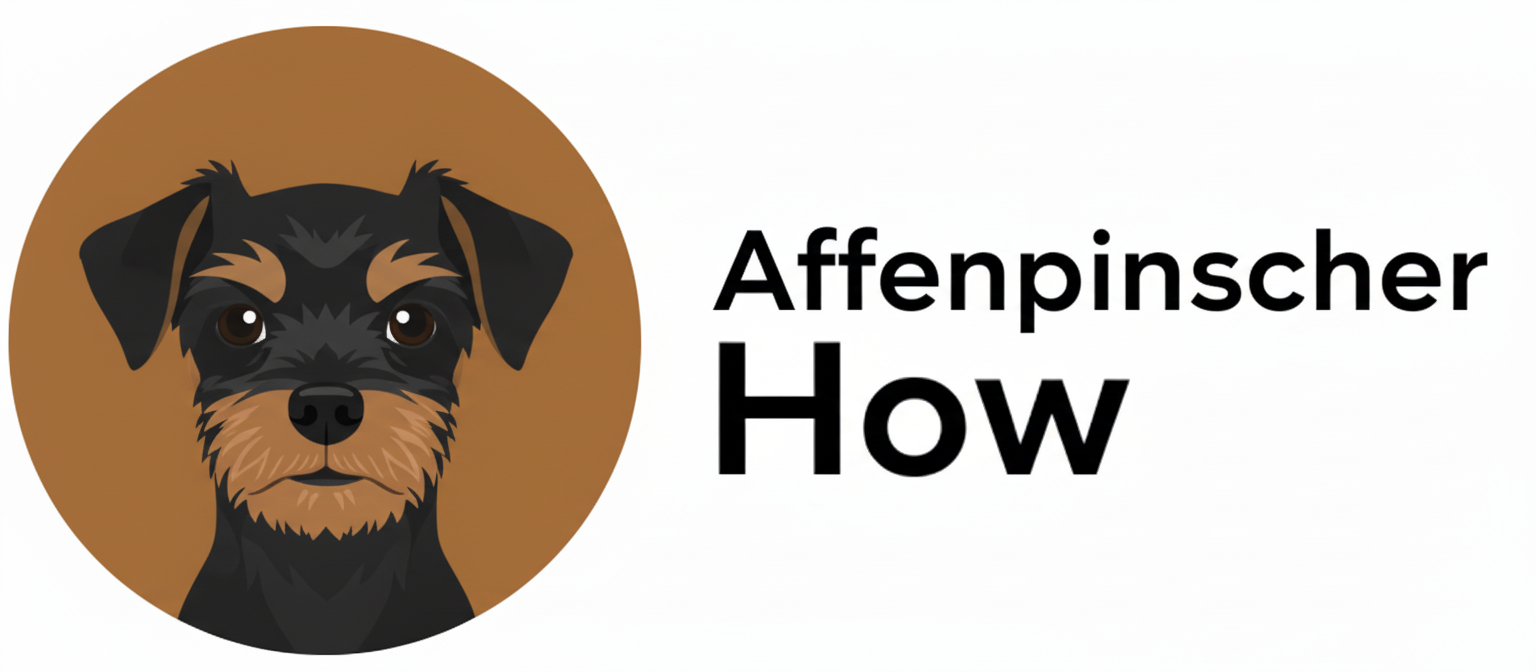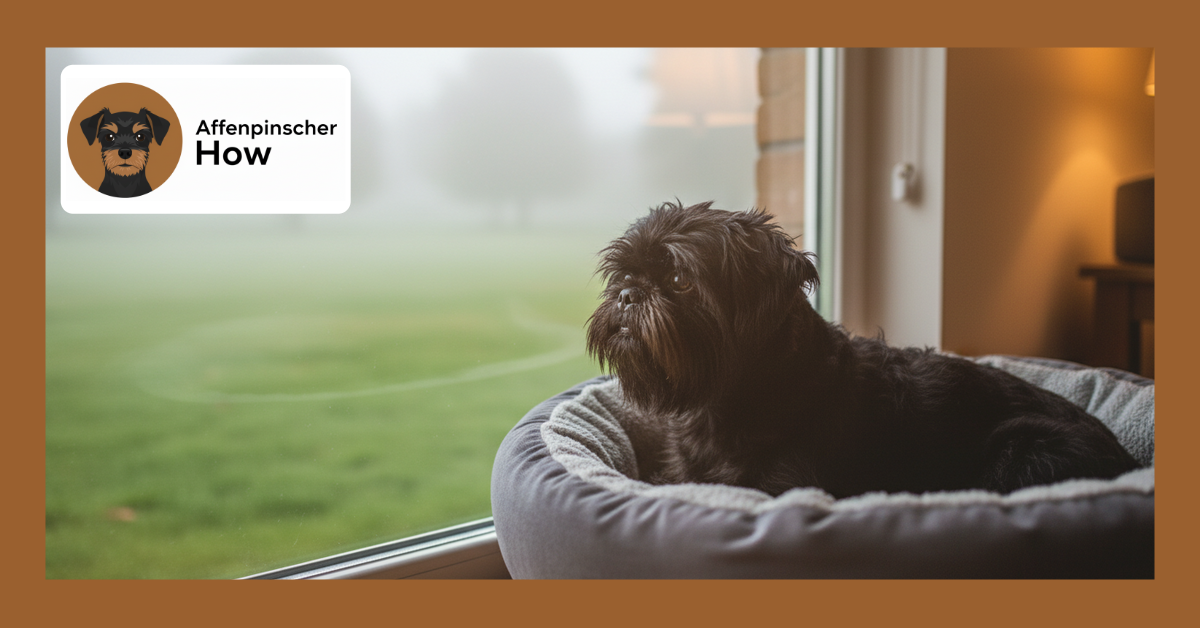Does your Affenpinscher launch themselves at every visitor like a furry rocket? You’re not alone. Jumping up affects over 70% of companion dogs, with Affenpinschers ranking among the most persistent jumpers due to their energetic and attention-seeking nature.
Training Affenpinscher not to jump requires understanding that this behavior is reinforced by attention or access to desired objects. Recent clinical studies show that owners can achieve an 85% reduction in jumping behavior using evidence-based techniques within 4-6 weeks.
This comprehensive guide reveals the behavioral science behind your Affenpinscher’s jumping and provides step-by-step methods that professional trainers use to eliminate this frustrating habit permanently.
Why Affenpinschers Jump: The Science Behind the Behavior
Understanding why your Affenpinscher jumps is crucial for effective training. Recent functional analysis research reveals that jumping behavior serves specific purposes for dogs.
Affenpinschers jump primarily for two reasons:
- Attention-seeking: Your reaction (positive or negative) reinforces the behavior
- Access to resources: Reaching food, toys, or elevated surfaces
- Excitement overflow: High energy levels with no appropriate outlet
The breed’s independent and intelligent nature makes them particularly persistent when jumping behavior gets rewarded. Unlike some breeds that give up easily, Affenpinschers will continue testing boundaries until they find what works. This natural curiosity and persistence is also why Affenpinschers can be skilled fence jumpers when not properly trained.
Evidence-Based Training Methods for Affenpinscher Jumping
Professional dog behaviorists recommend a three-pronged approach that addresses the root causes of jumping while building alternative behaviors.
The Redirect and Reward Method
This technique redirects your Affenpinscher’s jumping energy into a desired behavior:
- Anticipate the jump: Watch for pre-jump signals like excited panting or focused staring
- Command “sit” before jumping occurs: Use a firm, clear voice
- Reward immediately: Treat and praise the moment their bottom touches the ground
- Ignore jumping attempts: Turn away completely if they jump despite the command
Noncontingent Reinforcement Technique
Based on clinical research showing statistically significant results, this method provides attention on a schedule rather than in response to jumping.
Provide positive attention (treats, petting, praise) every 30-60 seconds when your Affenpinscher displays calm behavior. This satisfies their attention needs without reinforcing unwanted jumping.
Step-by-Step Training Protocol
Follow this proven 6-week protocol that combines multiple evidence-based techniques:
Week 1-2: Foundation Building
- Practice “sit” command 10 times daily in low-distraction environments
- Establish consistent responses to jumping (turn away, no eye contact)
- Begin noncontingent reinforcement schedule
Week 3-4: Proofing the Behavior
- Practice greetings with family members
- Introduce mild distractions during training
- Extend sitting duration before rewards
Week 5-6: Real-World Application
- Practice with visitors at the door
- Test training in different locations
- Gradually reduce treat frequency while maintaining praise
| Training Week | Success Rate | Key Milestone |
|---|---|---|
| Week 1-2 | 30-40% | Consistent “sit” response |
| Week 3-4 | 60-70% | Reduced jumping with family |
| Week 5-6 | 85-90% | Controlled greetings with strangers |
Common Mistakes That Sabotage Training
Even well-intentioned owners can accidentally reinforce jumping behavior. Avoid these critical errors:
Inconsistent Responses
If family members react differently to jumping, your Affenpinscher learns that persistence pays off. Everyone in the household must follow the same protocol.
Punishment-Based Methods
Knee bumps, spray bottles, or verbal corrections often increase anxiety and can make jumping worse. Affenpinschers respond much better to positive reinforcement techniques.
Training Only When Convenient
Skipping training sessions when you’re tired or busy sends mixed messages. Consistency is crucial for success with this intelligent but stubborn breed.
Advanced Techniques for Persistent Jumpers
Some Affenpinschers require additional strategies to overcome deeply ingrained jumping habits. If your dog struggles with multiple behavioral issues, consider a comprehensive Affenpinscher obedience training program that addresses all aspects of behavior together.
Environmental Management
Control your dog’s environment to prevent jumping opportunities:
- Use baby gates to create barriers during greetings
- Keep high-value items out of reach
- Provide appropriate jumping outlets like agility equipment
Mental Stimulation Solutions
Affenpinschers need cognitive challenges to prevent boredom-related jumping. Engaging playtime activities, training games, and scent work can redirect their mental energy productively.
When to Seek Professional Help
Consider consulting a certified dog trainer or behaviorist if:
- Jumping persists after 8 weeks of consistent training
- Your Affenpinscher shows aggressive behavior during corrections
- Family members struggle to implement techniques consistently
Professional trainers can provide personalized strategies and help troubleshoot specific challenges with your individual dog.
Successfully training Affenpinscher not to jump requires patience, consistency, and understanding of canine behavior science. By implementing these evidence-based techniques and maintaining realistic expectations, you can transform your energetic jumper into a well-mannered companion. Remember that every small success builds toward lasting behavioral change, and your persistent efforts will pay off with a calmer, more controlled pet.
Frequently Asked Questions
How long does it take to train an Affenpinscher not to jump?
Most owners see significant improvement within 4-6 weeks of consistent training. However, complete elimination of jumping behavior may take 8-12 weeks, especially with older dogs or those with deeply ingrained habits. The key is maintaining consistency throughout the training process.
Why does my Affenpinscher only jump on certain people?
Affenpinschers are smart enough to learn that different people have different reactions to jumping. They may jump on visitors who give attention but not on family members who consistently ignore the behavior. This selective jumping proves that the behavior is learned and can be unlearned with proper training.
Should I use treats every time my Affenpinscher sits instead of jumping?
Initially, yes. High-value treats should be given every time your dog chooses sitting over jumping during the first 2-3 weeks. After the behavior is established, gradually transition to intermittent reinforcement using praise, petting, or occasional treats to maintain the behavior long-term.
Can I train an older Affenpinscher not to jump, or is it too late?
It’s never too late to train an Affenpinscher not to jump. While older dogs may take longer to change established habits, they can absolutely learn new behaviors. Older Affenpinschers often have better focus than puppies, which can actually make training easier once you establish the routine.
What should I do if my Affenpinscher jumps on children?
Jumping on children requires immediate intervention for safety reasons. Use environmental management first – create physical barriers between your dog and children until training is complete. Teach children to turn away and ignore jumping while adults enforce the “sit” command. Never allow children to correct jumping behavior themselves.
My Affenpinscher jumps when excited about walks. How do I stop this?
Pre-walk excitement jumping is common in energetic breeds. Practice putting on the leash only when your dog is sitting calmly. If they jump, remove the leash and wait. Repeat until they remain seated during the entire leash-attachment process. This may take several sessions but effectively reduces excitement-based jumping.
Are there any tools that help with Affenpinscher jumping training?
Yes, several tools can assist training. Front-clip harnesses give you better control during greetings. Treat pouches keep rewards easily accessible for quick reinforcement. Long training leashes allow you to maintain control while practicing greetings. Avoid anti-jumping devices like shock collars, which can increase anxiety and worsen the problem.

